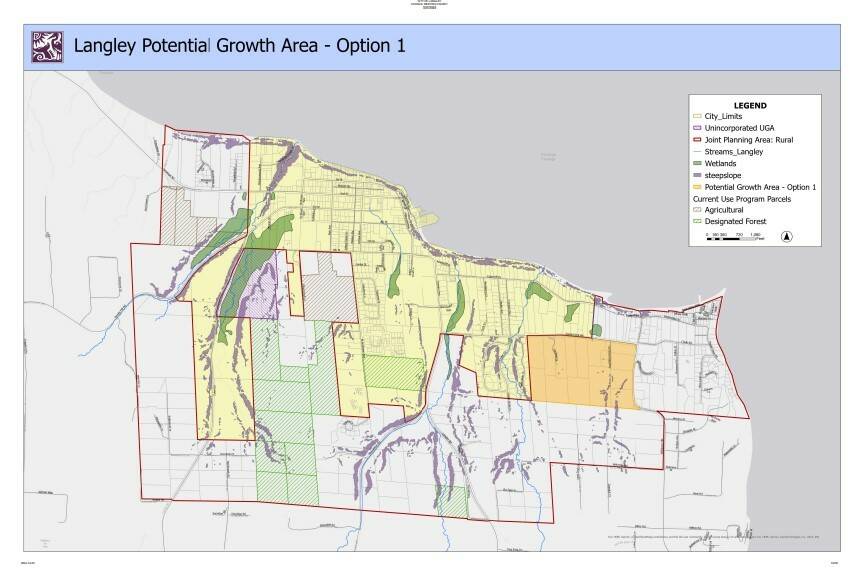City of Langley officials are exploring options for the relocation of a Potential Growth Area.
During a meeting last week, Director of Community Planning Meredith Penny explained to the city council that as part of the ongoing comprehensive plan update, staff is recommending that Langley consider coordinating with Island County to better protect natural resources and plan for growth in areas of existing and planned infrastructure. As a result, this means changes to the Joint Planning Area Potential Growth Area overlay.
The issue is that the current Potential Growth Area includes land in the forestry and agriculture tax programs, which does not meet the criteria for potential growth. Additionally, the Whidbey Camano Land Trust has been pursuing conservation efforts in these areas.
The current Potential Growth Area is located south of Sixth Street. Penny provided three options for it to go instead, which are all located south of Sandy Point Road. Citizen-led committees preferred the first option, which includes the least amount of acreage compared to the other choices but aligns with the city’s plan to bring water infrastructure to the neighborhood.
Councilmember Gail Fleming expressed concern about the presence of wetlands and water running down towards unstable bluffs. If an area is excessively constrained by critical areas, she said, it shouldn’t be part of the Potential Growth Area.
Councilmember Chris Carlson said given the 10 to 20 or more years that Langley has before the Potential Growth Area would be considered as part of the city’s urban growth area, there is time to do studies and to implement policies to ensure responsible growth.
Other council members also had environmental concerns. Councilmember Rhonda Salerno said a hydrogeological study of the city has never been done before, and it would be prudent to do it before making any decisions. The area in question is a watershed and has been deforested.
“We have to do everything we can to stop the water from saturating and the more trees, and the more development we put above a bluff that’s already very unstable creates a situation like happened in Oso,” she said, adding that it sets a bad precedent.
Penny said updating the city’s tree ordinance – and as a part of that exploring canopy retention requirements for new development – is included in her department’s work plan. In order to meet a deadline set by Island County, she asked if the council could provide direction on the new location of the Potential Growth Area by the next council meeting scheduled for Oct. 21.
In the end, the council decided that night to move the Potential Growth Area from its present location and tabled the decision about where to move it until the next meeting.



